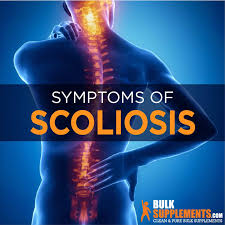Secliosis Treatment :-
The spine curves to one side as a result of scoliosis. Any part of the spine can be impacted by the curvature; however the upper spine and lower back are the most frequently affected areas. When a person is still rapidly growing, in late childhood or the beginning of adolescence, scoliosis is most prevalent. Males are less likely to experience it than females. Although scoliosis is not usually obvious, some sufferers may lean to one side or have unequal shoulders or hips as a result of the spine's curve. Because the curve frequently does not advance significantly, the person typically does not require treatment. Doctors may advise a mix of back bracing and physical therapy, however, depending on the severity of the curvature and the child's age.
Symptoms can include the following:
- the head may appear a bit off center
- the ribs on each side may be slightly different heights
- one hip may be more prominent than the other
- the clothes may not hang evenly
- one shoulder or shoulder blade may be higher than the other
- the person may lean to one side
- the legs may be slightly different lengths
Symptoms in infants:- In infants, symptoms can include:
- ⦁ a bulge on one side of the chest
- ⦁ consistently lying with the body curved to one side
- ⦁ in severe cases, problems with the heart and lungs, leading to shortness of breath and chest pain

